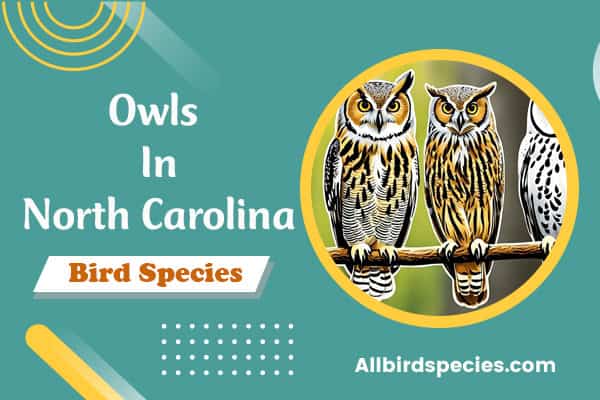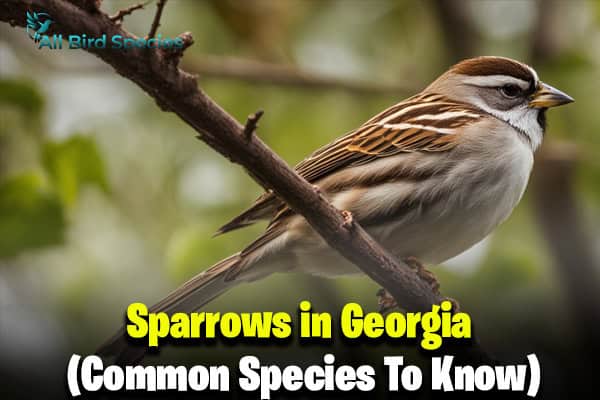Top 7 Types of Woodpeckers in Ohio (ID Guide With Pictures)
Ohio is a great place for woodpeckers lovers, with eleven different species found here. You can see these birds in many places, like open fields, forests, and even cities. This variety makes Ohio a perfect spot for birdwatching.
Let’s go on an adventure to learn about Ohio’s woodpeckers. We’ll cover how to identify them, their behaviors, and where they live. This guide will help you become a woodpecker expert. So, get ready to explore the world of these amazing birds in Ohio.
1. Downy Woodpecker
The downy woodpecker is the smallest and most common woodpecker in North America. It stands out with its black and white feathers. The bird has a black head, white bars on the sides, and white underparts. Males have a red patch on their heads, while young birds have a red cap.

Range and Habitat
Downy woodpeckers live all year in most of the United States and Southern Canada. They even reach as far as Southern Alaska but not into the Southeastern US or Mexico. These birds love to live in forests, open woods, and areas with lots of bushes.
Diet and Foraging Behavior
Downy woodpeckers eat mostly insects like ants and caterpillars. They also enjoy seeds, grains, berries, and nuts. These birds are great at finding food on trees and under the bark. They help control pests by eating many harmful insects.
2. Red-bellied Woodpecker
The red-bellied woodpeckers are bright and beautiful birds found in Ohio woodlands and forests. It has black upperparts with white bars and gray underparts with a reddish tint on the belly. The male has a bright red cap, while the female has a red nape and a red patch above the bill.

These woodpeckers make a lot of noise, from a loud trill to a churr-churr-churr. They eat insects, spiders, and other invertebrates, as well as seeds and nuts. They love the diverse habitats of Ohio.
Red-bellied woodpeckers are common in Ohio and their numbers are stable and growing. They have moved into areas with people and enjoy visiting backyard feeders. They are great additions to Ohio’s bird community.
3. Hairy Woodpecker
The hairy woodpecker looks a lot like the downy woodpecker but is bigger with a longer bill. To tell them apart, check the outer tail feather. The hairy woodpecker’s tail feather is plain white, while the downy’s is spotted.
Hairy woodpeckers are about a third bigger than downy ones. They look more robust because of their size.

Distinguishing Features from the Downy Woodpecker
Hairy woodpeckers and downy ones look similar but have key differences. Hairy woodpeckers have longer bills and plain white outer tail feathers. Downy woodpeckers have spotted feathers there.
There are also regional differences. Northern birds are usually bigger. Eastern birds have more white on their black wings.
Range and Habitat Preferences
Hairy woodpeckers live in many places, like mature forests and open woodlands. They’re common in Ohio, especially in the west. You can also find them in suburbs, parks, and cemeteries.
They like areas with lots of bark beetles too.
Foraging Habits and Diet
Hairy woodpeckers eat mostly insects. They go after bark beetles, corn borers, and moths to control infestations. They also eat ants, bees, wasps, spiders, and other bugs.
They eat some plant foods like seeds and berries too. They drill into trees to get to their insect food.
4. Pileated Woodpecker
The pileated woodpecker is a large bird in North America, reaching lengths of nearly 20 inches. It has mostly black feathers with white stripes from its face to its throat. The bird also sports a dark red crest. These woodpeckers are famous for their loud calls and drumming on dead trees.

Identification and Appearance
Male pileated woodpeckers stand out with their bright red crest and a white stripe on their face and neck. They also have a red stripe on their cheek. Females have a similar red crest but no red cheek stripe. Both have black feathers with white stripes on their face and throat. Their large white wing patches are visible when they fly.
Habitat and Range
Pileated woodpeckers live in big, old forests, especially those with hardwoods and deciduous trees. They also like mixed woodlands, woodlots, and parks with big trees. These birds can live in many wooded places, even near human homes. In areas with big trees and woods, they form pairs and protect their territory all year.
5. Northern Flicker
The northern flicker, also known as the common flicker, is a medium-sized bird. It belongs to the woodpecker family under the Colaptes genus. There are two subspecies: the Yellow-shafted and the Red-shafted. They differ in the color of their tail and wing feathers. These birds have a lighter underside, darker wings, and large black spots.

Yellow-shafted and Red-shafted Subspecies
Male Yellow-shafted flickers have a black “whisker” marking by the bill, grey on the top of their head, and a red patch. On the other hand, male Red-shafted flickers have a red whisker marking. Females of both subspecies lack the whisker marking.
Identification and Plumage
Northern flickers are one of the few North American woodpeckers that migrate. Birds in the northern parts move south for the winter. The red-shafted and yellow-shafted forms of Northern Flickers were once considered different species. Now, they hybridize extensively in a wide zone from Alaska to the panhandle of Texas.
Foraging Behavior and Diet
Northern flickers eat a variety of insects, fruits, seeds, and nuts. They forage on the ground and in trees, especially for ants. Flickers often stay in Ohio to breed and overwinter. The spring migration of northern flickers in Ohio peaks in mid-April.
6. Red-headed Woodpecker
The red-headed woodpecker is a beautiful bird found in the eastern United States, including Ohio. It’s a medium-sized bird known for its bright red head, sharp grey bill, and white underparts. Its black upperparts have a white rump and big white patches on the wings.

Appearance and Identification
This woodpecker stands out with its bright plumage. Its red head and neck, white breast, and black back and wings are eye-catching. The sharp grey beak and large white patches on the wings help identify it.
Range and Habitat Preferences
In Ohio and the eastern United States, red-headed woodpeckers are common. They like semi-open areas with big trees like oaks. You can find them near forest edges, rivers, wetlands, open country, orchards, and parks.
Foraging Habits and Diet
Red-headed woodpeckers catch insects in flight from tall trees. They eat insects, fruits, seeds, and nuts. They’re also known to store food, hiding it with wood or bark.
7. Yellow-bellied Sapsucker
The yellow-bellied sapsucker is a fascinating bird in Ohio. It has black wings and a unique face with black and white stripes. The bird also has a large white wing patch and blurring on its back. Its flanks have barring, and its chest is pale yellow. The red crown and throat of males add to their distinct look.

Appearance and Identification
These birds are a bit smaller than hairy woodpeckers but bigger than downy ones. They look like robins but with a special color pattern. This includes a red forehead, throat, and underparts, making them easy to spot.
Migratory Pattern and Range
Yellow-bellied sapsuckers migrate between the Southeastern United States and Mexico, and Central America in the winter. They move north to the Northeastern United States and Southern Canada in spring. In Ohio, they visit during certain seasons, preferring forests with aspen and birch trees.
Sap-Feeding Behavior and Diet
These birds are known for their sap-feeding habits. They drill holes in trees to get to the sap, eating it and the insects it attracts. They like trees with lots of sap sugar, like birches and maples. In winter, they also eat insects and fruits in Ohio.
Also, Read My Previous Articles
Final Thoughts on Woodpeckers of Ohio
Ohio is home to many woodpecker species, each with unique features and behaviors. From the tiny downy woodpecker to the big pileated woodpecker, these birds are key to their ecosystems. They eat insects and plants, helping to keep their habitats healthy.
If you love birdwatching or just enjoy nature, Ohio’s woods are great for seeing woodpeckers. You can spot the red-headed woodpecker or hear the hairy woodpecker drumming. These birds show us the beauty of nature and their important role in the ecosystem.
We must work to protect these amazing birds and their homes. By supporting conservation efforts, teaching others, and valuing these birds, we can help them survive. Let’s make sure the woodpeckers of Ohio continue to flourish for years to come.







